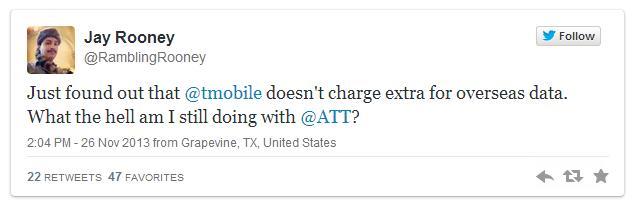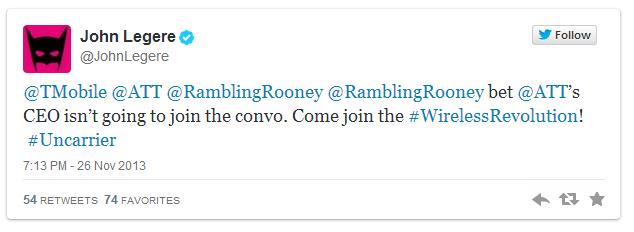by Fronetics | Mar 18, 2014 | Blog, Leadership, Marketing, Social Media, Strategy, Supply Chain
Rather than focus sales efforts on seeking out prospects and making cold calls re-focus your efforts so that the emphasis is on demand generation. Why? Demand generation shortens the sales cycle and increases sales opportunities by nurturing and engaging potential customers. Moreover, demand generation is a commitment to long-term customer relationships.
Demand generation builds and nurtures prospect and customer relationships for the long-term. To do this effectively, companies need to do things like host webinars, create a blog, and promote blog posts through social media. Companies need to create and disseminate content-driven resources that establish themselves as a thought leader and as an industry influencer, and which engage prospects and customers alike.
Demand generation is not a sprint. It takes time to build and implement a successful strategy. However, once a strategy is in place and is consistently and continuously implemented, there will be positive results. Specifically, website traffic will increase and, by extension, so will the number of prospects. These prospects are warm leads. These prospects are ones which your sales team should focus on as they are more likely to convert to customers than the cold call prospect. In fact, prospects that come to you via a successful demand generation strategy are five times more likely to become your customers.
To grow sales through demand generation it is important to identify your target customers and their needs. In short, get to know your target customer and identify how your company can anticipate and respond to their needs. Furthermore, take the time to choose the right content and choose the right place to disseminate content.
Shorten your sales cycles and increase your sales opportunities by focusing time and effort on creating and implementing a demand generation strategy instead of on cold calls.
If you’d like to learn more about demand generation and what it can do for your business, get in touch. Fronetics Strategic Advisors works with companies in the logistics and supply chain industries to develop and implement a demand generation strategies.
A version of this post appeared on DC Velocity.

by Fronetics | Jan 28, 2014 | Blog, Logistics, Marketing, Social Media, Strategy, Supply Chain

Social media and social media technologies have rapidly changed the way companies do business across every type of industry. Social media brings businesses closer to their customers, provides a platform for communication and building thought leadership, and when executed properly it can help drive business and provide a significant return on investment. Businesses that ignore social media forgo these opportunities and miss out on potential business development opportunities.
According to The McKinsey Global Institute, 90 percent of companies who were using social media or social technologies for their business reported benefiting from their efforts in 2012. And how could they not? Utilizing a social media technology can increase a company’s reach into their industry and provides optimal channels for communicating with their customers.
The supply chain and logistics industries are two industries that have not adopted social media and social technologies as quickly as others. Business owners in these have a difficult time seeing past the “social” aspect of these technologies and understanding what the implied benefits of using social technologies can mean for their business. Many find themselves asking “why?” instead of “how?” when considering implementing a social media strategy, and ultimately allocate resources elsewhere within their businesses.
The Fronetics white paper, Social Media and the Logistics and Supply Chain Industries: Why Not Participating is a Risk You Can’t Afford to Take, provides meaningful insights into why supply chain and logistics companies need to be using social media and the value of these technologies. Learn how to move past the barriers to adoption, how to leverage social technologies, and learn what a social presence can mean for your business.
To learn more about why your business needs social media, download Social Media and the Logistics and Supply Chain Industries: Why Not Participating is a Risk You Can’t Afford to Take today.

by Fronetics | Jan 28, 2014 | Blog, Logistics, Marketing, Social Media, Strategy, Supply Chain

Social media and social media technologies have rapidly changed the way companies do business across every type of industry. Social media brings businesses closer to their customers, provides a platform for communication and building thought leadership, and when executed properly it can help drive business and provide a significant return on investment. Businesses that ignore social media forgo these opportunities and miss out on potential business development opportunities.
According to The McKinsey Global Institute, 90 percent of companies who were using social media or social technologies for their business reported benefiting from their efforts in 2012. And how could they not? Utilizing a social media technology can increase a company’s reach into their industry and provides optimal channels for communicating with their customers.
The supply chain and logistics industries are two industries that have not adopted social media and social technologies as quickly as others. Business owners in these have a difficult time seeing past the “social” aspect of these technologies and understanding what the implied benefits of using social technologies can mean for their business. Many find themselves asking “why?” instead of “how?” when considering implementing a social media strategy, and ultimately allocate resources elsewhere within their businesses.
The Fronetics white paper, Social Media and the Logistics and Supply Chain Industries: Why Not Participating is a Risk You Can’t Afford to Take, provides meaningful insights into why supply chain and logistics companies need to be using social media and the value of these technologies. Learn how to move past the barriers to adoption, how to leverage social technologies, and learn what a social presence can mean for your business.
To learn more about why your business needs social media, download Social Media and the Logistics and Supply Chain Industries: Why Not Participating is a Risk You Can’t Afford to Take today.

by Fronetics | Dec 2, 2013 | Blog, Marketing, Social Media, Strategy

Not too long ago I did not use Twitter and I relished being able to say that I had never sent a Tweet. I believed Twitter was not applicable to me – I don’t follow celebrity gossip and whereabouts, I don’t like the idea of sharing my personal thoughts and experiences with 232 million strangers, and I have yet to take a “selfie” (much less share it with said 232 million strangers). In short, I didn’t use Twitter because I did not understand Twitter and I had no idea of its value. When I finally decided to remove my head from the sand and take stock of Twitter I was blown away not only by what Twitter really is, but also by my ignorance. Using Twitter for business is essential. If you and your business have not yet taken the plunge into the Twitter pool it is time to grab your trunks and jump.
A 2013 study conducted by the Center for Marketing Research at the University of Dartmouth found that 77 percent of Fortune 500 companies have an active corporate blog. The study also found that rank influences Twitter use – 43 percent of the Twitter accounts are held by companies in the top 200 on the list as compared with the bottom 200 which hold 43 percent of the Twitter accounts. Similarly, 67 percent of the Inc. 500 use Twitter. Looking at small businesses, in 2013 Constant Contact reported that 25 percent of small businesses use Twitter – up from only 7 percent last year.
Why is it important to know who is using Twitter? Because those who are using Twitter are more likely to gain customers than those who don’t. A survey conducted by Market Probe International found that 72 percent of those who follow a business on Twitter are more likely to make a purchase from that business and that 82 percent of followers are more likely to recommend a product or service to friends and family. The survey also found that 85 percent of respondents reported feeling a closer connection to a small business if they follow them on Twitter.
In addition to demand generation, the following are reasons why you and your business should use Twitter:
- Increase market intelligence
- Drive traffic to your website
- Monitor your business and your brand
- Connect with customers
- Manage risk
- Share information
Still skeptical?
SJF Material Handling Equipment is the single largest source for new, used and refurbished material handling equipment in the US. The company has built an extensive and successful social media network – one which uses Twitter – with the objective of increasing sales. The company has 55,797 followers on Twitter (and is gaining 200 to 400 followers each week). Stafford Sterner, President of SJF, says that Twitter enables the company to cover more ground and attract customers from unexpected and often unrelated circles.
Another example is the battle for customers between AT&T and T-Mobile that played out on Twitter. The throw down began when Jay Rooney Tweeted that he was considering a switch from AT&T to T-Mobile.

What occurred next was an all-out battle between AT&T and T-Mobile for Jay Rooney (and other customers) – both companies took to Twitter to try to convince Rooney that their company and service is the best. Rooney does a great job of summarizing the exchange:

The battle for Rooney intensifies and T-Mobile’s Chief Executive John Legere jumps in the fray:

Impressed, Jay Rooney decides to make the jump to T-Mobile. What’s more, the conversation caught the attention of many others. In the end, the exchange netted customers for T-Mobile.
(For more on the exchange, check out ZDNet’s article on battle between AT&T and T-Mobile.)
Ready to take the plunge? Social Media Examiner has a great how to article on how to use Twitter for business and for marketing.

by Fronetics | Nov 25, 2013 | Blog, Marketing, Social Media, Strategy, Talent

First impressions are no longer face to face. Rather, a first impression is now comprised of information which can be gathered via a quick search of the Internet. A first impression can be, for example, inclusive of your LinkedIn and Facebook pages, your personal blog, your Instagram page, your Twitter account, your Klout score, your pins on Pinterest, and anything else that may have made itself onto the Internet. Because of this, that 7 seconds you used to have to make a first impression when you enter the room is gone – chances are that the first impression was made long before you arrived. The reality is that when you walk into that room you are likely being evaluated against the first impression that was made prior to your arrival.
In today’s world you are a brand. Like it or not, if you want to be successful you need to not only recognize this reality, but you also need to take steps to build and enhance your brand. Here is how to brand yourself.
1. Define your brand
In short, a brand is a story. What is your story? Take the time to sit down and look at where you have been and where you are. Where you want to be? What is your skill set? What experiences do you have? How are you unique? Take all of this information and knowledge and define your brand – define your story. Be clear, be concise, and be direct. If you can’t define you as a brand in a sentence or two, you have lost an opportunity.
2. Take stock
What information is “out there”? Start by making a list of all the social media accounts you have – even if you no longer actively use them
Next, Google yourself. What do you find? As G.I. Joe says, “Knowing is half the battle.”
3. Define a strategy
At this point you have a brand and you know what information about your brand is publicly available. Is the information enhancing or hurting your brand? What steps can you take to strengthen your brand? For example, should you adjust your privacy settings on some of your accounts so that personal information and exploits are not available for all to see? Does your LinkedIn page need to be updated? If you don’t take the time to define your strategy you will not be able to execute it effectively.
4. Take action
Frank Cavallaro recently wrote about moving from strategy to execution. He wrote: “Strategy is about making choices. Execution is about getting down and dirty so that those choices can produce results.” Don’t stop at creating the strategy – execute. And remember, the Internet is not static. What information about you has been added? Furthermore, it is important to periodically look at your brand. Is it still representative of where are and where you want to be? If not, take the time to re-brand yourself.
When you take the time to brand yourself you have the opportunity to define that first impression.







